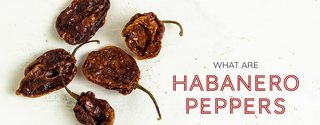What Are Habanero Peppers
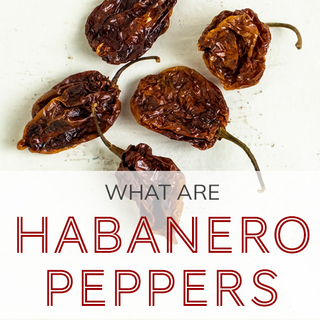
What Are Habanero Peppers?
The Habanero pepper (ha-ba-NEH-ro), a member of the Capsicum chinenese botanical family, is also called habanero chile or chile habanero. Habaneros are known by the same name whether they are fresh or dried.
These peppers are small, boxy, lantern-shaped chiles, approximately 1 ½-2 inches long and just over an inch wide. While they are small, they are mighty. They contain a tremendous amount of heat; from 1994-2006, the Guinness Book of World Records named the Habanero the world's hottest chile, but other peppers have since toppled it.
The word habanero means “from Havana”, which gives the wrong impression regarding the origins of this pepper.
Table of Contents
All About Dried Habanero Peppers
What Does a Dried Habanero Look Like?
How Spicy Are Dried Habaneros?
How Do You Use Dried Habanero Peppers?
All About Dried Habanero Peppers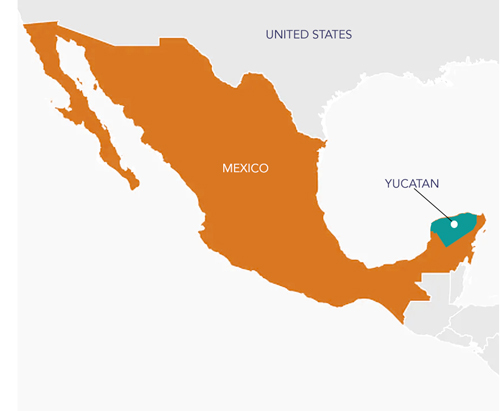
It’s commonly accepted that Habanero chiles are an ancient variety of pepper, with ancestors that emerged in the Amazon roughly 8,000 years ago. The peoples of that region were active traders, carrying the Habanero seeds up through Mexico. This pepper thrived in the hot, dry climate of the Yucatan peninsula, where it became a domesticated and tradeable crop.
Eventually, this pepper came to Havana, Cuba, which had been a trading port for Spain since the 1500s and is the center of the La Habana Province. This pepper became very popular in the Cuban markets, eventually being given the name Habanero to indicate its association with the trade there.
The original name of the Habanero pepper has been lost, with one exception. The brown variety of Habanero was extensively grown by the Aztecs. It was known as xocolātl (sho-co-LAT) since the color of the pepper was reminiscent of the drink they enjoyed made from bitter brown cacao. From this same root came the word for one of the world’s favorite treats, chocolate.
There is a wealth of information to learn about Mexican dried chiles when you consider the sheer number of peppers and their impact on cuisines worldwide. Aside from their fascinating history, understanding peppers means learning how they have changed in response to time and environment. This has helped them develop a wealth of flavors that can be coaxed from deep within a pepper for richness and nuance. It also means recognizing their wide-ranging heat levels require proper handling, particularly for scorching peppers like the Habanero.
Spices, Inc. has been sourcing, processing, and selling Mexican dried chiles since 2008. Our dried chiles are sought after by chefs in Mexican restaurants, small-batch hot sauce crafters, brewmasters in microbreweries, and home cooks.
With more than a decade of experience behind us, we’ve gotten quite familiar with the world of chiles, including the Habanero, and we’d like to share this information with you. You’ll learn about the beautiful flavors this pepper can provide and the recipes that benefit from adding some Habanero. You’ll discover the benefits of toasting a pepper to unlock those flavors. We’ll teach you to grind toasted Habaneros into powder or rehydrate them. Then you’ll be able to experiment with the peppers and their terrific flavor as you incorporate dried Habanero chiles into all kinds of dishes.
| Also Called | Habanero chiles or chile habanero |
| Recommended Uses | Salsas, sauces, spice rubs, omelets, and frittatas |
| Flavor Profile | Pungent with notes of papaya, coconut, and berry |
| Scoville Heat Units | 100,000-350,000 SHU |
| Species | Capsicum chinense |
| Cuisine | Mexican |
| How To Store | Airtight container in a cool, dark place |
| Shelf Life | 1-2 Years |
| Country of Origin | Mexico |
What Does a Dried Habanero Look Like?
Habaneros are small peppers, no more than 2 inches long and 1-1 ½ inches wide. They are a robust red- or orange-brown. They are pretty boxy at the shoulders but taper down to a point at the bottom. When fresh, their skin is smooth and waxy with deep ridges that run lengthwise. As they dry, they wrinkle all over, though the deep ridges can still be seen.
How Spicy Are Dried Habaneros?
Habaneros have a Scoville Heat Unit (SHU) measurement of 100,000-350,000, which means they are incredibly spicy. We consider this to be one of our “crazy hot” chiles. The heat from a Habanero takes a little time to hit, which is why we get to enjoy this pepper's bright, fruity flavors. But once the delay is over and the heat hits, it hits hard and lingers for a long time.
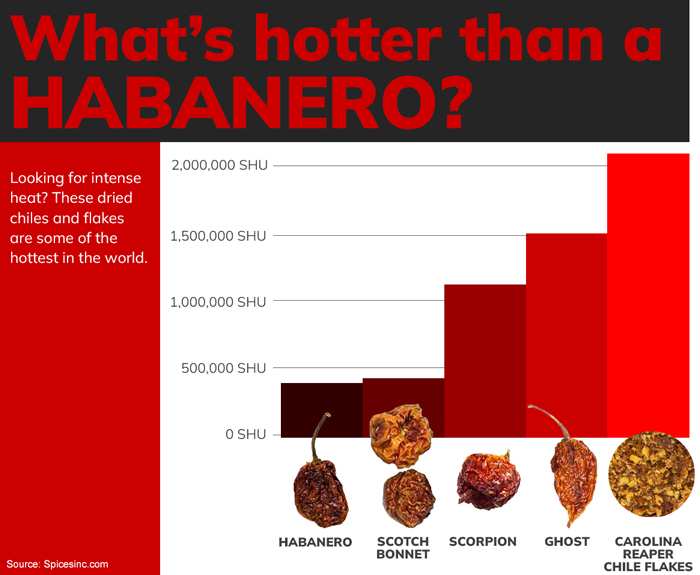
Is a Habanero Hotter than a Jalapeno?
Jalapeños measure 2,500-8,000 SHU so a Habanero can be as much as 50-60 times hotter than a jalapeño.
What’s Hotter, Habanero or Serrano?
A Habanero is much hotter than a Serrano. Serranos are a medium heat chile and measure 10,000-25,000 SHU. At their hottest, a Habanero is 14 times hotter than Serrano.
Are Dried Habaneros Hotter than Fresh?
Dried Habaneros usually seem hotter than fresh ones. Both dried and fresh peppers contain the same number of Scoville Heat Units. The dried pepper may feel hotter because as it dries the pepper concentrates. Since capsaicin is not soluble in water it won't evaporate with the moisture in the chile, so the pepper will have less body weight to counter the heat.
Is Habanero the Same as Scotch Bonnet?
A Habanero pepper is not the same as a Scotch Bonnet. People often confuse the two peppers. They look a lot alike. They are both boxy and small and are both members of the Capsicum chinense family, so they share a similar heat profile. Habanero peppers have a SHU of 100,000-350,000, and Scotch Bonnets deliver 200,000-300,000 SHU.
They can be used in the same ways and equal amounts. However, Scotch Bonnets taste like apples and tomatoes, while Habanero has coconut, papaya, and berry flavors.
What Color of Habanero Is the Hottest?
There are 18 recognized varieties of Habanero available. Of those, the Red Savina Habanero is the hottest and can reach heat levels of 577,000 Scoville Heat Units (SHU), which can be nearly twice as hot as other Habaneros. This is not the only kind of red Habanero, though. Most red varieties fall into the standard heat range of 100,000-350,000 SHU.
How Do You Use Dried Habanero Peppers?
You can use dried Habanero peppers the same way you’d use any other dried pepper. Since it is extremely hot, add it in small doses until you know how you like the heat, and wear gloves when handling this pepper.
Habanero can be chopped up and added to salsa, like Pineapple Habanero Salsa, or it can make a fiery Red Enchilada Sauce. It stands up to intense flavors, so add a few slivers of Habanero to the marinade in Chile Marinated Pork for an extra kick, or grind it and add to the rub for Red Chile Steak. Make a fiery Yucatan favorite, Pollo Pibil, with the addition of Habanero. Its fruity flavor would be terrific in Homemade Barbecue Sauce. This would be an excellent way to make super-spicy huevos rancheros or omelets or use it to spice up baked foods like frittatas and cornbread.
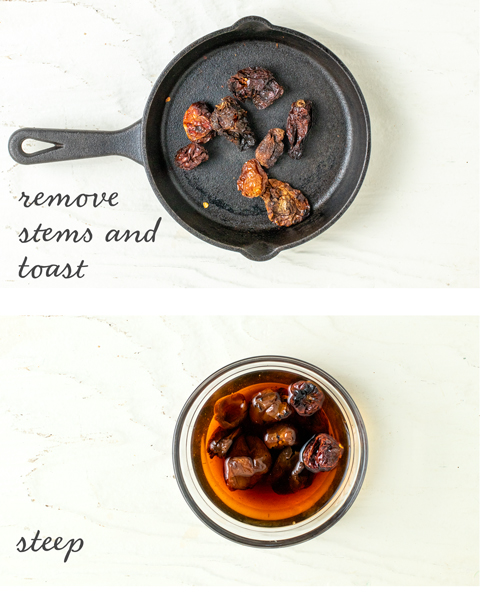 How to Toast Habaneros
How to Toast Habaneros
Put on gloves to handle these peppers, and place dried Habaneros in a dry pan over medium-high heat. Toast, shaking the pan, for 1-2 minutes, until it is toasted all over. The peppers should smell fruity, fragrant, and spicy, and the skin should blister. Remove them from heat immediately if they start to blacken or smell burnt. Be careful not to over-toast these as they will then taste bitter and burnt.
We recommend toasting Habanero chiles in a well-ventilated space with an exhaust fan running. These peppers can release capsaicin into the air during toasting and cause coughing and irritation.
How to Rehydrate Habanero Chiles
Once Habanero peppers are toasted, place them in a heat-proof bowl and cover them with boiling water. Weight them down if necessary to keep them fully submerged. Leave them in hot water for 10-15 minutes, or until completely soft and pliable. Drain the water—slice or mash as desired.
Steeping water from Habanero chiles is bitter, extremely hot, and not usable. It should be discarded.
How To Make Habanero Chile Powder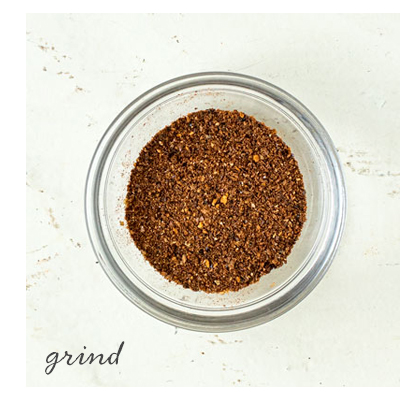
After Habanero peppers have been toasted, remove them from heat and let them get cool enough to handle. Put on gloves. Pull off the stem if it’s still attached. Some chile heads prefer to pull the pepper open at this stage to remove the seeds and pith as they believe these are bitter and detract from the full flavor of the chile pepper. You can certainly leave them in as the flavor differences are minor.
Place peppers in an electric spice grinder or a mortar and pestle. Grind to desired consistency. Use them immediately or store them in an airtight container, away from heat and direct sunlight, for future use.
How to Store Dried Habaneros
Store dried Habanero peppers in an airtight container, away from heat, moisture, and direct sunlight. The container should be opaque to block out direct sunlight. We do not suggest you store peppers in plastic bags since baggies don’t guarantee an airtight seal. They tend to trap moisture, which can lead to mold. With proper storage, these chiles should remain viable in your pantry for 1-2 years.
Peppers should never be stored near your oven and stove. In use, these appliances raise the surrounding air temperature. If chiles are stored near the stove, they may start to sweat as the heat rises. If they are stored in airtight containers, the sweat cannot evaporate, leading to mold and mildew on your chiles.
Dried Habaneros should be dry with a little bit of “squish” to them. They are light and small and have thin skin. The skin should look ruddy brownish red with plenty of wrinkles, not pale or ashy. Some breakage in the chiles may naturally occur, but they should be predominantly intact.
How Long Will They Last?
Under stringent conditions, Habaneros can be stored for 2-3 years. It would require a climate-controlled pantry with a temperature that hovers between 60-72°F. Humidity should be kept low. Containers should be glass or plastic, opaque, and away from direct sunlight. If these conditions are met, you can expect your chiles to have a longer shelf life. We recognize that these can be complex guidelines to maintain, so we suggest you plan for a 1-2 year shelf life for your chiles.
Dried Habanero Pepper Substitution
The best substitute for a dried Habanero pepper is its close cousin, the Scotch Bonnet. The Scotch Bonnet has a comparable heat measurement of 200,000-300,000 SHU and is roughly the same shape and size so that you can use them in a 1:1 substitution.
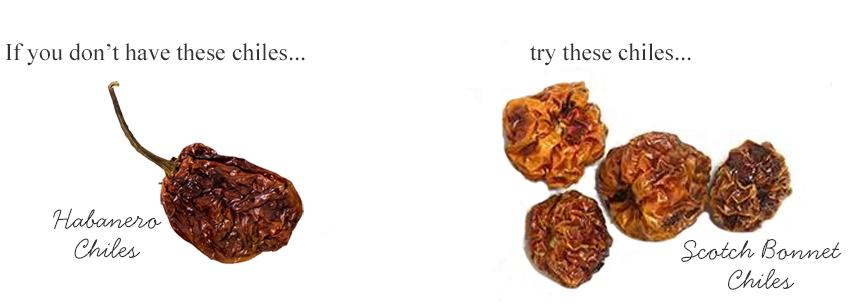
Where to Buy Dried Habanero Peppers
Dried Habanero peppers have recently gained popularity, making them comparatively easy to find. Look for them in Mexican markets, most chain grocery stores, and big-box and online specialty retailers. These shopping environments offer various positives and negatives.
Mexican markets enjoy the benefits of staff that are often very familiar with chile peppers and can offer practical advice on their use and storage. They can often identify different peppers on sight and can confidently guide a customer to the right pepper for the recipe.
Since these markets tend to be small, they don’t get as much traffic. Their products can linger on a shelf, meaning customers can buy peppers that have been aging for quite a while before using them. These stores also don’t wield much clout with suppliers, so they usually can’t arrange for better wholesale purchasing prices. Higher supply costs get passed to customers to maintain profit margins.
Larger grocery chains can buy dried peppers relatively cheaply, in bulk, from their suppliers. Lower bulk pricing means they can charge customers a lower price at the cash register, and they will often have popular peppers, like Habaneros. But they are not necessarily concerned with shelf life, so dried chiles may languish in a warehouse until they are sent out to the stores. There is also often a lack of training for grocery store employees, which leads to mislabeling and product issues like confusion surrounding the differences between Habaneros and Scotch Bonnets.
Big box retailers offer convenience and shopping perks, like 24-hour online, one-stop shopping, and shipping discounts. However, these large retailers are often little more than fulfillment centers for third-party vendors and don’t have an easy-to-use customer service department. This means there is often no one to answer any questions a customer might have at the point of sale or a guarantee of product quality, accuracy, or freshness when placing orders.
Online sellers specializing in spices and chiles rely on product knowledge, pricing, and selection to build their customer base. They earn their reputation through customer service and employee knowledge. These employees can discuss the differences between a Habanero and a Scotch Bonnet. Specialty vendors have practices for selecting and packing chiles promptly and accurately. They want their employees to know what they’re selling and make product information available all along the line, from customer service and order placement to the shipping department. Customers can feel confident that they will get the peppers they’ve ordered and that these peppers are the right ones for the job.
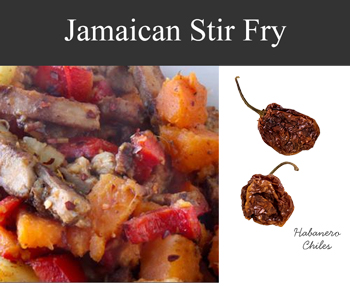
| 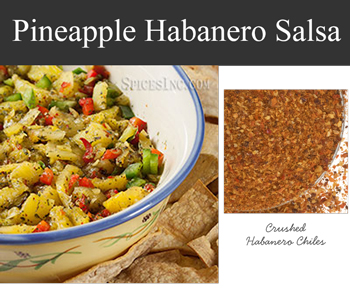
|
What to Look for When Buying Dried Habaneros
Dried Habanero peppers are small, no more than 2 inches long, and 1 ½ inch wide. They are a ruddy reddish brown and wrinkled all over. The skin is thin and glossy but waxy and surprisingly tough. Most peppers will still have their stems attached and should be intact, though there may be minimal breakage during handling. They have a faint aroma of fruit.
Habanero peppers have intense heat that lasts long after the pepper is eaten. Beautiful, tropical flavors can be found in a Habanero if you get past the heat, making them a favorite for salsas, sauces, or anything that wants a fiery boost.
Mexican chiles have shaped the world’s cuisines thanks to their versatility and enormous appeal. Peppers like the Habanero, with its combination of exquisite flavor and crazy-hot heat, demonstrate the complexity that can be found in a pepper. It bewitches the palate and helps show why people keep coming back to the world of Mexican dried chiles over and over again.

